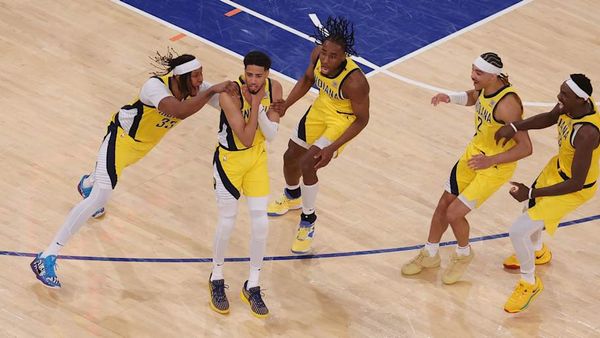
Parsi New Year or Navroz signifies the day when Zoroastrian community set foot in India from Persia. Sheriyar Dotivala, executive chef, The Resort Mumbai, says, “The Parsi new year, also known as Navroz, is celebrated by performing rituals at fire temples to mark the beginning of new year.”
It is a tradition that began over 1,000 years ago and is observed by the Parsi community around the world who follow the Zoroastrian religion. Murad Cursetji, owner, Zamus restaurant, says, “Parsis came to India from Persia to take refuge in Gujarat and blended in like a teaspoon of sugar in milk with the Indians adding to their rich culture. That is why Parsis follow the Shahenshahi calendar and celebrate this day as their New year in India.”
Pateti is celebrated one day before Navroz. Pateti means reverence to ones ancestors and is a celebration of one’s lineage. It is a day of repentance. The next day is celebrated as the New Year.
Anuraag Narsingani, executive chef, JW Marriott Pune, shares, “One of the delicacies that can be relished on this day is Pulao, mostly made of mutton. But one can also relish the chicken version of the dish. The Pulao is garnished with boiled eggs, fried onions, nuts and raisins, and is served with Masala ni Daar which is a thick dal fragrant with dhansak masala. Kachumbar is also served alongside.”
The meal includes dishes such as chicken or mutton cutlets, Patra ni Machhi, Sali Boti or Sali Marghi, and Kaju Kid Gos, to name a few. Lagan nu Custard is a favourite when it comes to desserts for Navroz.

Modern variations of Parsi cuisine
The Parsi cuisine has seen evolution over the years through coming in contact and mixing with different cultures in India, shares Dotivala. Parsi cuisine has recently experienced modern makeover to make it more popular. Rachel Goenka Khetarpal, founder and CEO, The Sassy Spoon, says, “The idea is to retain the true flavours of the dish and then transform them. For example, a cross between Shakshuka and Salli par Edu, A Dhansak stew, Farcha fritters, Akoori with some finely chopped veggies, Lagan nu custard Pannacotta etc.”
A lot of the traditional mutton dishes now feature chicken instead as that is considered a lighter protein. Anuraag, adds, “While you might find modernised versions of some Parsi classics on restaurant menus, a Parsi would prefer to be old fashioned and stick to the traditional dishes as they are. In fact, their focus is more on bringing lesser known or forgotten dishes back onto dinner tables.”
Murad shares that Patia is made with mutton as they try not to fish during the monsoon months. Cutlets and chips are also added to festive menus. He adds, “Dhansak is never eaten on festive occasions but many non Parsis who relish Dhansak ask for it when they come out to eat.”
Kuldeep Garude, executive chef, Elior India, says, “Chicken Farcha Burger, Crispy Farcha Wings, Papeta Nu Pareedu baskets, Foil nu Custard are the modern variations giving the taste of the traditional taste that are served today. Youngsters nowadays are moving their taste buds from junk food to ancient and traditional cuisines to bring spice in their life.”

Delicacies to be relished
Parsis celebrate this day with friends and families by indulging in feasting of some traditional home-made dishes. Dotivala adds, “Delicacies such as Saas Ni Machchi, Sali Marghi (Chicken with Potato Shreds), Dhan-Dar (Parsi Dal), Kid Gosht and Kolmi Pape to Tetralo (Prawns and Potato) are usually prepared on this special day.”
Cursetji shares, “In the morning, ravo a sooji milk and sugar sweet porridge is prepared at home. Followed by the festive Parsi delicacies like Maura Dal Chawal which is an integral part of any Parsi celebration with Machhi Nu Patio or Kolmi Nu Patio famously called Dhandar Patia or Mutton Pulao Dal. Sweets such as Lagan nu custard and Sev Dahi are also prepared .”
Traditional Parsi dishes that should make a comeback
Dotivala points out that some of the traditional Parsi dishes which have almost disappeared are Mosoorma Jeebh and Kakdi ma Gosht. Another dishes include Vasanu (made with a long list of dried herbs, roots and fruits. Vasanu is a wholesome winter Parsi specialty comprising aleti paleti (Chicken Liver and Gizzards).
Garude adds, “Akuri on Toast, Papeta nu Par eedu, Berry Pulao , Lagan Nucustard are some of the traditional parsi dishes that are rarely found these days. Though many urban households don’t make them from the beginning, they use them in most of their food. The Parsis are also known to have a serious affinity for coconuts. In ancient Persia coconuts were considered to be exotic and because of the large amount of usage it made its way into Parsi’s ceremonial life and food. Every Parsi family make their own unique dish. Parsi food is mildly spiced and strikes the perfect balance between sweet and spice.”
Recipes
1.Chicken Farcha

Ingredients: 300 gm chicken boneless, 1 teaspoon garlic paste, 1 1/2 teaspoon garam masala powder, 1 pinches salt, 4 tablespoon bread crumbs, 1 pinch powdered black pepper, 1/2 teaspoon coriander powder, 1 teaspoon ginger paste, 1 teaspoon red chilli powder, 2 tablespoon lemon juice, 3 eggs, 1 cup refined oil, 2 pinches salt
Method: To prepare this delicious dish, wash the chicken under cold running water and pat dry. Cut it into pieces. Next, take a large bowl with ginger- garlic paste, lemon juice, red chili powder, garam masala, chicken pieces. Add salt and black pepper as per your taste and mix well. Marinate the chicken pieces properly. Once done, keep it aside for few hours. Heat oil in a pan over medium-high flame. Meanwhile, crack open the eggs in a large bowl and season with salt, pepper, and red chili and whisk it properly. Take a large plate and spread the breadcrumbs on it. Roll each chicken piece in the breadcrumbs to coat well. Dip the chicken in the whisked eggs mixture and drop into the oil. Fry till the chicken is golden on each side. Serve the chicken farchas hot with the dip of your choice or mint chutney.
By Sheriyar Dotivala, executive chef, The Resort Mumbai
2.Mutton dhanshak with caramelised brown rice
For mutton:500gm mutton (boneless), 30gm ginger garlic paste, 3tsp salt, 800ml water
For caramelised rice:500gm basmati rice, 40gm jiggery, 20ml sunflower oil, 4 bay leaves, 8 cloves, 2tsp cumin seeds, 1 tsp salt
For dal:15gm ghee, 200gm tur dal, 2 green chilli, 50gm brinjal, 75gm pumpkin, 25gm coriander, 3 stalk spring onion, 175gm tomatoes, 10 curry leaves, 1tsp turmeric powder, 8gm red chilli powder, 12gm dhansak masala, 12gm sambhar masala,
Method: Marinade mutton with salt and ginger-garlic paste and cook in pressure cooker for 3 whistles and 25 minutes on low flame. Wash twice and soak the dal water for at least ½ hour. Chop all the vegetables and keep aside In the cooker, add ghee then vegetable mixture (brinjal, pumpkin, tomato, spring onion, chillies and curry leaves) sauté it and add the spices (turmeric, chilly, dhansak, sambhar) then dal. Cook until 3 whistles and for 10 minutes on low flame. After the cooker mixture is cooked, blend it to smoothen the consistency. Add in mutton and stock to give it the gravy texture. Serve it with caramelised rice and home-made kachumber
To make caramelised brown rice, first wash and soak basmati rice in water. Heat oil and add garam masala and jaggery. Heat the jaggery till it becomes dark brown but don’t let it burn. Add in the rice and water. Once cooked, drain the water, and set the rice aside
By Rachel Goenka Khetarpal, founder and CEO, The Sassy Spoon
3.Parsi Sev
Ingredients: 200gm vermicelli, 1 ½ sugar, 2 cup ghee, 1/2cup almond (slivered), 1/2cup raisins, 1tsp vanilla, 1/2tsp nutmeg powder, ½ teaspoon green cardamom powder
Method: Heat one cup of water, add sugar and stir so that the sugar dissolves completely. Set aside. Break the vermicelli into one and a half inch pieces. Heat ghee in a pan and add the vermicelli pieces and fry gently on low heat, stirring occasionally, till they turn evenly golden. Drain the ghee into a bowl and return the vermicelli pieces to the pan. Add the sugared water, little by little, cover and cook on medium heat till the vermicelli gets cooked but not mashed. Heat the drained ghee in another pan. Add slivered almonds and sauté till light brown. Remove when done. In the same ghee, add raisins and sauté till they fluff up. Drain. Add vanilla essence along with nutmeg-green cardamom powder to the vermicelli and mix gently. Add the sautéed raisins and almonds and mix again gently. Serve hot with sweet yogurt.
By Sheriyar Dotivala, executive chef, The Resort Mumbai







